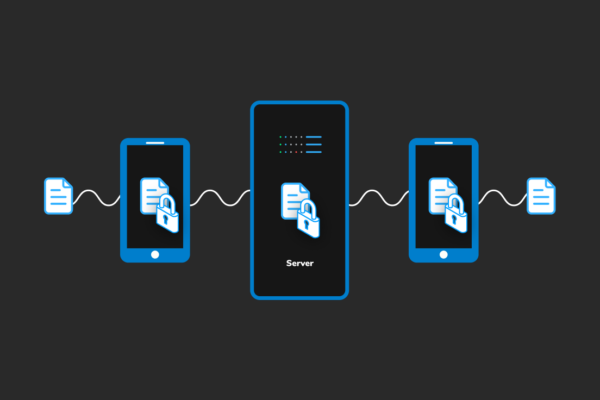Brief Overview of End-to-End Encryption
End-to-End Encryption (E2EE) is a crucial technique used to secure digital communications by ensuring that only the sender and the intended recipient can access the transmitted data. In this method, data is encrypted on the sender’s device and can only be decrypted by the recipient, with no intermediary, including service providers, able to decipher the content. E2EE provides a high level of confidentiality and privacy, protecting sensitive information from unauthorized access or interception.
Expanding on End-to-End Encryption
End-to-End Encryption works by encrypting data at the source and decrypting it only at the destination, effectively creating a secure channel for communication. This process involves the use of encryption keys, which are unique codes used to encode and decode the information. Without these keys, the encrypted data remains unreadable, even if intercepted during transmission. E2EE is commonly employed in messaging apps, email services, file sharing platforms, and virtual private networks (VPNs) to ensure the privacy and security of user data.
Key Features of End-to-End Encryption
End-to-End Encryption offers several key features that contribute to its effectiveness in protecting digital communications:
- Confidentiality: E2EE ensures that only the sender and intended recipient can access the contents of the communication, keeping sensitive information private.
- Integrity: By encrypting data end-to-end, E2EE prevents unauthorized tampering or modification of the transmitted information.
- Authentication: E2EE verifies the identities of both the sender and the recipient, ensuring that only trusted parties can participate in the communication.
- Non-repudiation: E2EE provides proof of the origin and authenticity of the transmitted data, preventing either party from denying their involvement in the communication.
Types of End-to-End Encryption
End-to-End Encryption can be implemented using various cryptographic algorithms and protocols. Some common types of E2EE include:
| Type | Description |
|---|---|
| Symmetric Encryption | Uses a single shared key for both encryption and decryption, often faster but requires secure key exchange. |
| Asymmetric Encryption | Utilizes a pair of public and private keys for encryption and decryption, offering better security but slower performance. |
| Hybrid Encryption | Combines symmetric and asymmetric encryption to leverage the strengths of both approaches, providing a balance between security and efficiency. |
Ways to Use End-to-End Encryption
End-to-End Encryption can be applied in various scenarios to protect sensitive data and communications:
- Messaging Apps: Popular messaging platforms like Signal, WhatsApp, and Telegram use E2EE to secure conversations and media sharing.
- Email Services: End-to-End Encryption can safeguard email communications, ensuring that only the intended recipient can access the message content.
- File Sharing: Services like Dropbox and Google Drive offer E2EE options to protect files stored in the cloud from unauthorized access.
- Voice and Video Calls: Applications such as Zoom and Microsoft Teams utilize E2EE to encrypt real-time audio and video communications.
Challenges and Solutions in End-to-End Encryption
Despite its benefits, End-to-End Encryption also poses certain challenges:
- Key Management: Securely managing encryption keys can be complex, requiring robust key exchange mechanisms and secure storage practices.
- Usability: E2EE implementations should balance security with user convenience to ensure seamless and intuitive encryption experiences.
- Regulatory Compliance: Compliance with data protection regulations may present challenges for organizations implementing E2EE, requiring careful consideration of legal and regulatory requirements.
These challenges can be addressed through:
- Improved Key Management Practices: Implementing secure key management protocols and technologies to ensure the confidentiality and integrity of encryption keys.
- User Education and Awareness: Educating users about the importance of End-to-End Encryption and providing user-friendly encryption tools and interfaces.
- Collaboration with Regulators: Working closely with regulatory authorities to develop policies and standards that balance privacy protections with law enforcement and national security needs.
Characteristics and Comparisons
| Characteristic | End-to-End Encryption | Similar Terms |
|---|---|---|
| Encryption Scope | Data is encrypted from the sender to the recipient, ensuring end-to-end protection. | Transport Layer Security (TLS) provides encryption between communicating applications, but may not offer end-to-end protection if intermediaries have access to decrypted data. |
| Key Management | Requires robust key management practices to securely generate, exchange, and store encryption keys. | Other encryption methods may have simpler key management requirements, but may sacrifice security. |
| Performance Impact | Depending on the encryption algorithm and key size, End-to-End Encryption can have a performance overhead, especially for resource-constrained devices. | Other encryption methods may offer faster performance but may compromise security. |
Future Perspectives and Technologies
The future of End-to-End Encryption holds promising developments in:
- Homomorphic Encryption: Allowing computations to be performed on encrypted data without the need for decryption, preserving privacy while enabling data analysis.
- Quantum-Safe Encryption: Developing encryption algorithms resistant to attacks from quantum computers, ensuring long-term security in the post-quantum era.
- Distributed Key Management: Implementing decentralized approaches to key management, enhancing resilience and security against key compromise.
VPN and End-to-End Encryption
Virtual Private Networks (VPNs) play a crucial role in enhancing online privacy and security by encrypting internet traffic between the user’s device and the VPN server. While VPNs encrypt data in transit, they may not always offer End-to-End Encryption, especially if the VPN provider has access to the decrypted data. However, combining a VPN with E2EE-enabled applications provides an additional layer of security, ensuring end-to-end protection for sensitive communications.
Resources for Further Information
For more information about End-to-End Encryption, you can explore the following resources:
- Electronic Frontier Foundation (EFF) – https://www.eff.org/encryption
- Open Web Application Security Project (OWASP) – https://owasp.org/www-community/Encryption
- National Institute of Standards and Technology (NIST) – https://www.nist.gov/encryption
By leveraging the principles of End-to-End Encryption, individuals and organizations can strengthen the security and privacy of their digital communications, ensuring that sensitive information remains confidential and protected from unauthorized access.


